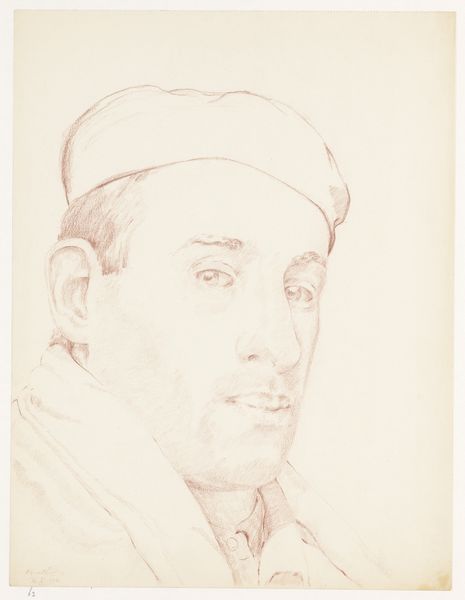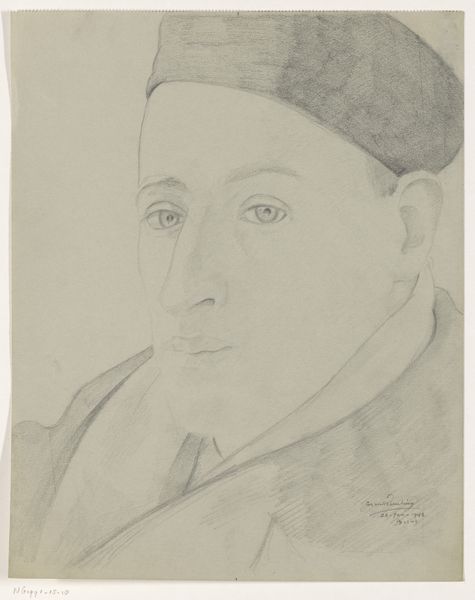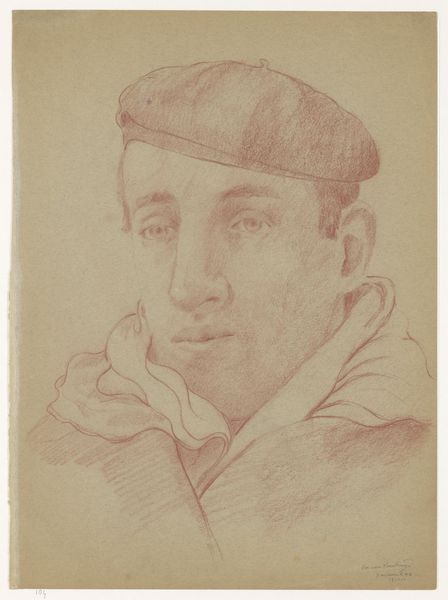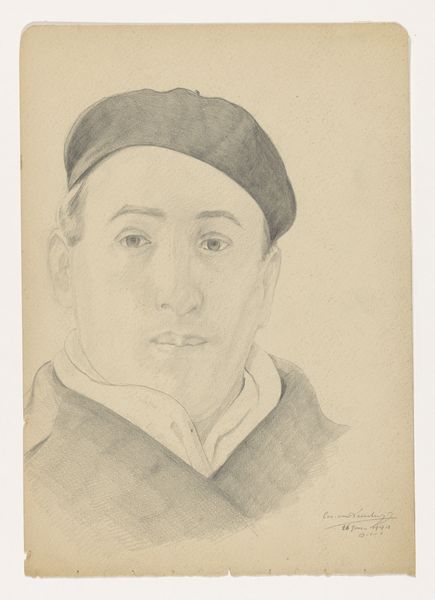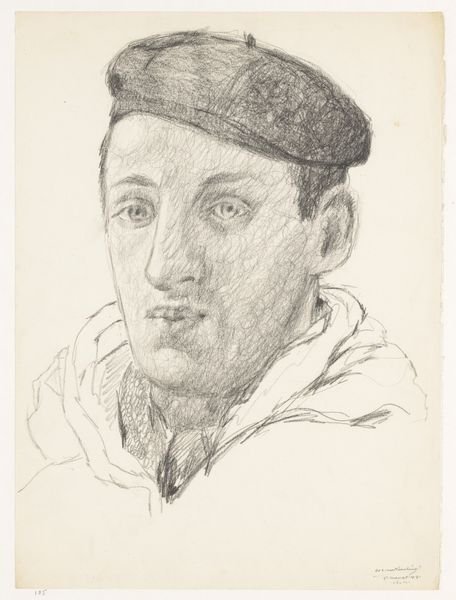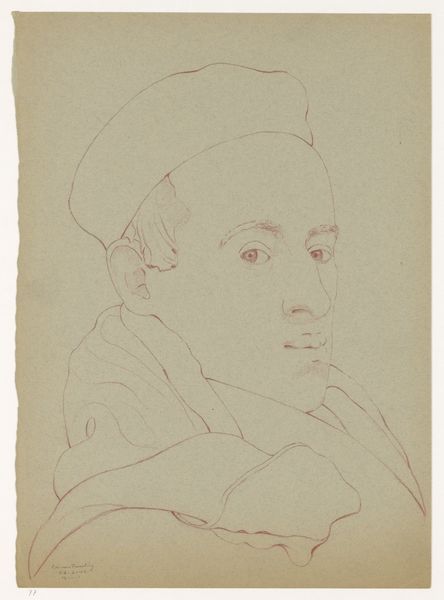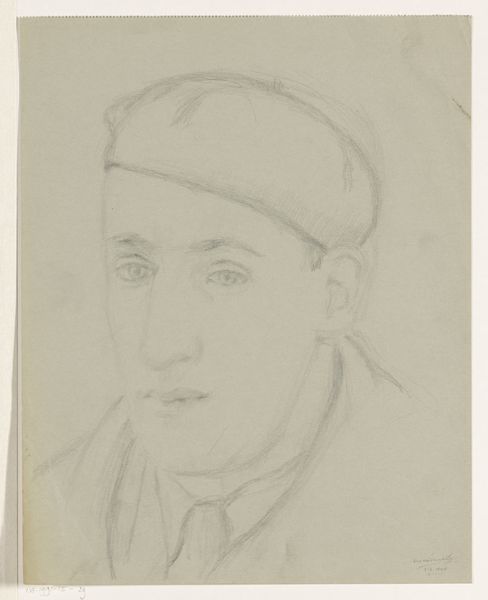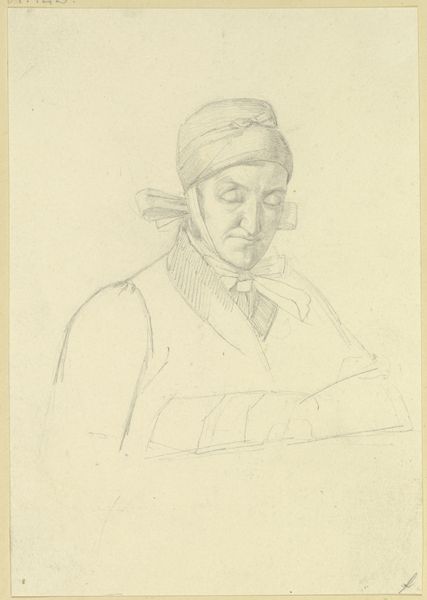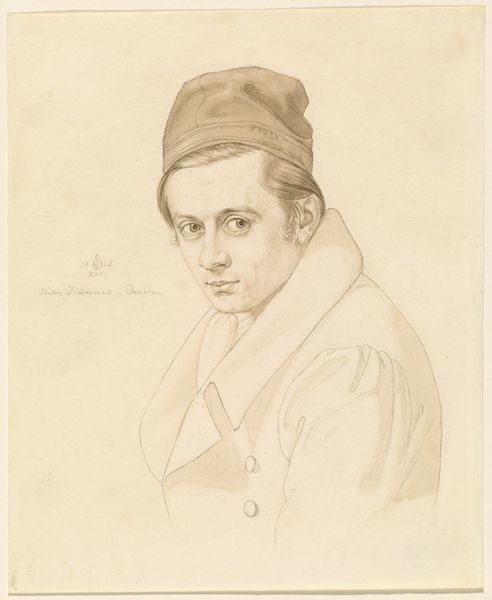
drawing, pencil
#
portrait
#
drawing
#
self-portrait
#
pencil drawing
#
pencil
#
portrait drawing
#
realism
Dimensions: height 35.5 cm, width 27.0 cm
Copyright: Rijks Museum: Open Domain
Editor: This is "Self-Portrait with Cap: B-1-1, 18 February" possibly from 1942, a pencil drawing by Cor van Teeseling, currently housed in the Rijksmuseum. It's strikingly stark, with the artist’s gaze feeling very direct. How do you interpret this work, especially considering the date? Curator: That direct gaze is compelling, isn’t it? Given the possible date of 1942, during the Nazi occupation of the Netherlands, this self-portrait takes on a particular resonance. Consider the act of self-representation during a time of intense surveillance and oppression. Do you think this portrait is a statement of identity, resistance, or something else entirely? Editor: I hadn't thought about it that way. Maybe it’s about maintaining a sense of self, even when external forces are trying to erase you? Curator: Precisely! The simplicity of the pencil drawing, the directness of the gaze, these could be seen as acts of defiance against the dehumanization inherent in fascist ideologies. It becomes crucial to see how identity and selfhood are represented, especially within oppressive structures. Does that change how you perceive the artwork now? Editor: Definitely. I was initially drawn to the formal elements, but understanding the socio-historical context adds a whole new layer of meaning. Curator: Indeed. By engaging with historical and social context, we begin to see how even the simplest of portraits can become powerful statements of resistance. Editor: That’s amazing, it’s made me look at the portrait in an entirely new light. Curator: Exactly. It is about acknowledging not only individual artistry but also its wider function, political and philosophical meanings that reverberate far beyond the gallery.
Comments
No comments
Be the first to comment and join the conversation on the ultimate creative platform.

